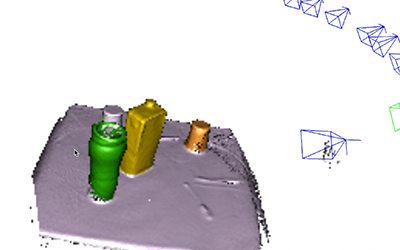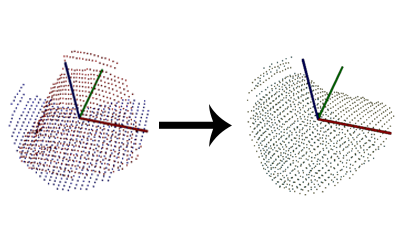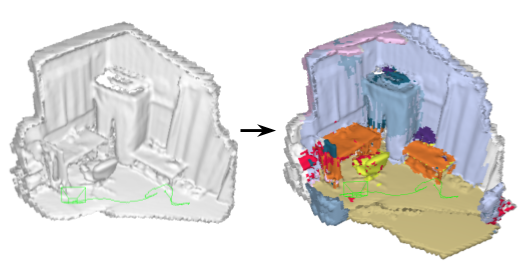Contact
 |
Shun-Cheng Wu  - Email: - Mailing Address:Chair for Computer Aided Medical Procedures and Augmented Reality - Office: MI 03.13.035 - Personal Page: page |
Student Projects
| Available |
| Running | |
| Master Thesis | Persistent SLAM (Shun-Cheng Wu Johanna Wald, Federico Tombari) |
| Finished | |
| Master Thesis | 3D inpainting with Semantic Scene Completion (Shun-Cheng Wu, Federico Tombari) |
| DA/MA/BA | A study of existing self-supervised depth estimations (Shun-Cheng Wu, Federico Tombari) |
Teaching
- Hauptseminar Computer Vision and Deep Learning for Autonomous Driving (2021SoSe)
- Hauptseminar Computer Vision and Deep Learning for Autonomous Driving (2020WiSe)
- Learning Multi-view Camera Relocalization with Graph Neural Networks Student: Frithjof
- Praktikum Perception and Learning in Robotics and Augmented Reality (2020SoSe)
- Diminished Reality. Team: Severin, Siyam, Anindya
- Hauptseminar Computer Vision and Deep Learning for Autonomous Driving (2019WiSe)
- Hauptseminar Recent Trends in 3D Computer Vision and Deep Learning (2019WiSe)
- Hauptseminar Seminar: Computer Vision and Deep Learning for Autonomous Driving (2019SoSe)
Research
 |
Improve the robustness of TSDF-based SLAM The research was done in a five months project. The main goal of this project is to build a SLAM system which is robust to tracking-loss, drifting and able to perform detail object-level reconstruction. In the period I used the sliding windows and keyframes methods to handle the tracking loss and relocalization respectively. Moreover, an object centroid tracking system was added to allow users to take certain object during reconstruction, so as to reconstruct the whole model (for example, the bottom part). |
|
 |
Learning to assign Local Reference Frame for 3D Point Cloud The idea of this research is to assign a local reference frame to the target point cloud before doing feature description, so as to get a descriptor which is invariance to rotations. The concept has been widely applied in some famous conventional 3D feature descriptors, e.g. SHOT, PS, USC, EM and MeshHog?. As well as learning based method, e.g. CGF. As well as in 2D features SIFT.There are many LRF methods has been proposed which work well on the 3D complete model. However, when it comes to the partial scan, point dropout or occlusion, the currently existing methods cannot perform well. That brings the idea of using deep learning to learn the local reference frame in the above mentioned difficult conditions. |
|
 |
SCFusion: Real-time Incremental Scene Reconstruction with Semantic Completion Real-time scene reconstruction from depth data inevitably suffers from occlusion, thus leading to incomplete 3D models. Partial reconstructions, in turn, limit the performance of algorithms that leverage them for applications in the context of, e.g., augmented reality, robotic navigation, and 3D mapping. Most methods address this issue by predicting the missing geometry as an offline optimization, thus being incompatible with real-time applications. We propose a framework that ameliorates this issue by performing scene reconstruction and semantic scene completion jointly in an incremental and real-time manner, based on an input sequence of depth maps. Our framework relies on a novel neural architecture designed to process occupancy maps and leverages voxel states to accurately and efficiently fuse semantic completion with the 3D global model. |
List of Publications at CAMP
| 2021 | |
| S. Wu, J. Wald, K. Tateno, N. Navab, F. Tombari
SceneGraphFusion: Incremental 3D Scene Graph Prediction from RGB-D Sequences IEEE Computer Vision and Pattern Recognition (CVPR), June 2021. (bib) |
|
| 2020 | |
| S. Wu, K. Tateno, N. Navab, F. Tombari
SCFusion: Real-time Incremental Scene Reconstruction with Semantic Completion International Conference on 3D Vision 2020 (bib) |
|
| UsersForm | |
|---|---|
| Title: | M.Sc. |
| Circumference of your head (in cm): | |
| Firstname: | Shun-Cheng |
| Middlename: | |
| Lastname: | Wu |
| Picture: | |
| Birthday: | 13.06.1991 |
| Nationality: | Blank |
| Languages: | English, Chinese |
| Groups: | Computer Vision |
| Expertise: | Computer Vision |
| Position: | Scientific Staff |
| Status: | Active |
| Emailbefore: | shuncheng.wu |
| Emailafter: | tum.de |
| Room: | MI 03.13.035 |
| Telephone: | |
| Alumniactivity: | |
| Defensedate: | |
| Thesistitle: | |
| Alumnihomepage: | |
| Personalvideo01: | |
| Personalvideotext01: | |
| Personalvideopreview01: | |
| Personalvideo02: | |
| Personalvideotext02: | |
| Personalvideopreview02: | |
